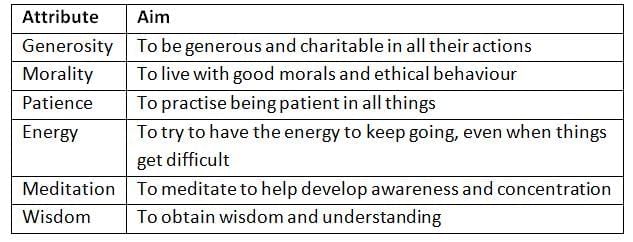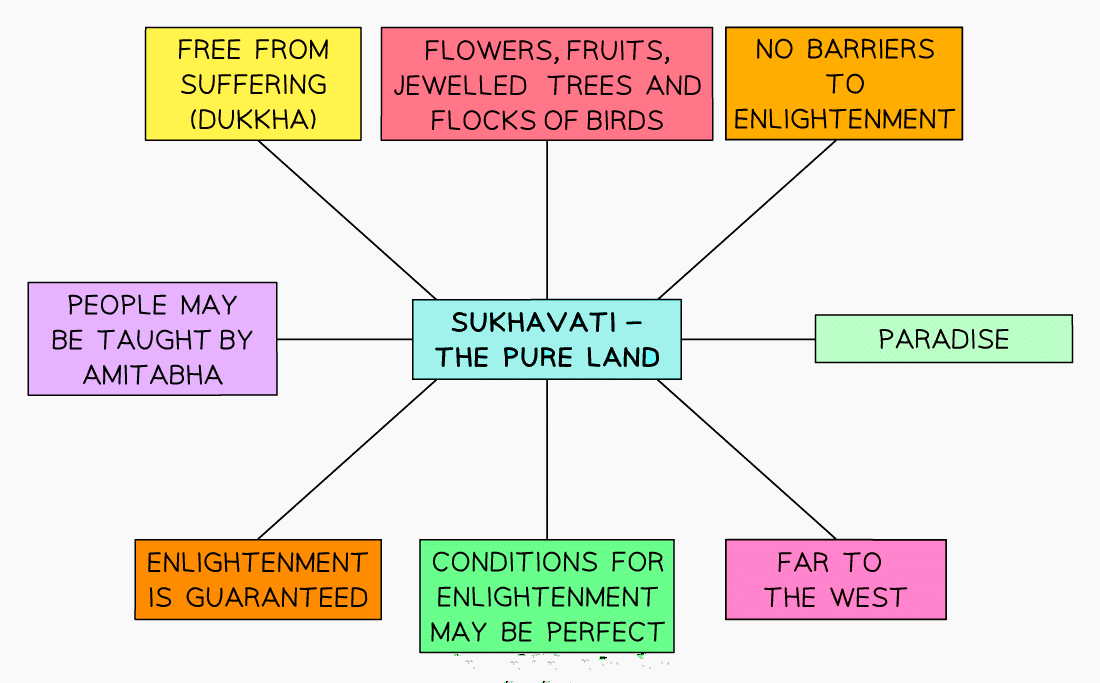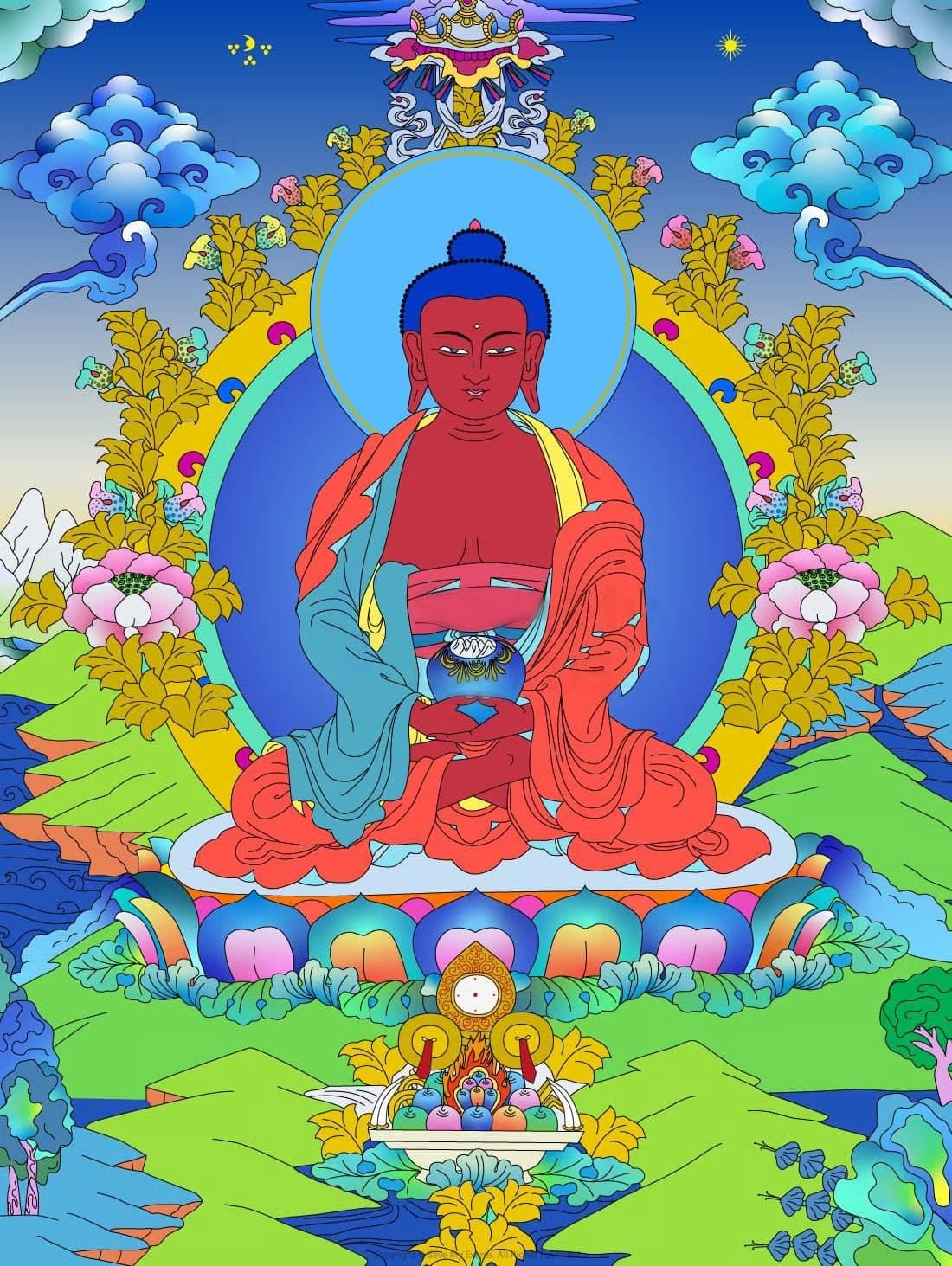Dhamma: Human Destiny | Religion, Philosophy & Ethics for GCSE/IGCSE - Year 11 PDF Download
| Table of contents |

|
| What is Human Destiny? |

|
| The Path to Becoming an Arhat |

|
| The Path to Becoming a Bodhisattva |

|
| Human Destiny: Buddhahood and the Pure Land |

|
What is Human Destiny?
In Buddhism, human destiny refers to the path a Buddhist follows to attain enlightenment and comprehend the Buddha’s teachings, known as the Dhamma. The two major branches of Buddhism, Theravada and Mahayana, present distinct ideals for a Buddhist’s ultimate purpose:
- Theravada Buddhists strive to become an Arhat through adherence to the Eightfold Path.
- Mahayana Buddhists aim to embody the Bodhisattva ideal by cultivating the Six Perfections.
The Path to Becoming an Arhat
- An Arhat is a “fully awakened person” who has eradicated the primary causes of suffering, referred to as the Three Poisons: greed, hatred, and ignorance.
- Upon achieving Arhatship, an individual attains Nibbana, which signifies:
- Liberation from the cycle of Samsara, meaning they are no longer subject to rebirth after death.
- This state is reached by following the Eightfold Path, which emphasizes wisdom, ethical conduct, and meditation.
- The aspiration to become an Arhat is central to Theravada Buddhism.
The Path to Becoming a Bodhisattva
- A Bodhisattva is an enlightened being whose personal enlightenment is intertwined with the liberation of all beings.
- After attaining enlightenment, Bodhisattvas choose to remain within the cycle of Samsara:
- Their motivation is compassion, as they seek to guide others toward enlightenment.
- Bodhisattvas pledge to act with compassion toward all sentient beings, aligning with the Buddha’s teaching: “to strive for the well-being of many.”
- A person becomes a Bodhisattva by practicing the Six Perfections.
The Six Perfections

Mahayana Buddhists recognize two types of Bodhisattvas:
- Earthly Bodhisattvas: These beings continue to be reborn in the world to assist others in reaching enlightenment.
- Transcendent Bodhisattvas: These are spiritual entities existing beyond time and space, who may manifest in the world to guide others toward enlightenment.
The ideal of becoming a Bodhisattva is the cornerstone of Mahayana Buddhism.
Human Destiny: Buddhahood and the Pure Land
Amitabha Buddha and the Pure Land
- Pure Land Buddhism, a prominent branch of Mahayana Buddhism, is widely practiced in Japan today. It centers on devotion to Amitabha Buddha and his paradise, known as Sukhavati, or the “land of bliss.”
- Amitabha Buddha, originally a king who renounced his throne to become a monk, created this paradise upon achieving enlightenment. All Pure Land Buddhists aspire to be reborn in this realm, as it provides an ideal environment for attaining enlightenment.
- Diagram illustrating Sukhavati, the Pure Land, highlighting concepts such as enlightenment, paradise, freedom from suffering, Amitabha’s teachings, and optimal conditions.

Features of the Pure Land
- The Pure Land is vividly described in The Larger Sukhavativyuha Sutra as “abundant with diverse flowers and fruits, decorated with jeweled trees, and visited by flocks of birds with melodious songs.”
- This vibrant depiction portrays Amitabha Buddha seated amidst ornate floral designs, clouds, and a picturesque landscape with mountains.
Amitabha Buddha in the Pure Land

How to Attain Rebirth in the Pure Land
T’an-luan, the founder of Pure Land Buddhism in China, outlined five religious practices to reach the Pure Land:
- Reciting sacred scriptures.
- Meditating on Amitabha Buddha and his paradise.
- Worshipping Amitabha Buddha.
- Chanting the name of Amitabha Buddha.
- Offering praises and gifts to Amitabha Buddha.
The most significant practice among these is chanting Amitabha’s name. By maintaining faith in Amitabha Buddha and engaging in these practices, devotees believe Amitabha will aid them in achieving enlightenment and attaining rebirth in the Pure Land.
FAQs on Dhamma: Human Destiny - Religion, Philosophy & Ethics for GCSE/IGCSE - Year 11
| 1. What is the significance of becoming an Arhat in Buddhism? |  |
| 2. What is the role of a Bodhisattva in Mahayana Buddhism? |  |
| 3. How does the concept of Pure Land relate to human destiny in Buddhism? |  |
| 4. What is the Eightfold Path and its significance in achieving human destiny? |  |
| 5. How do the paths of Arhat and Bodhisattva differ in their approach to human destiny? |  |



















